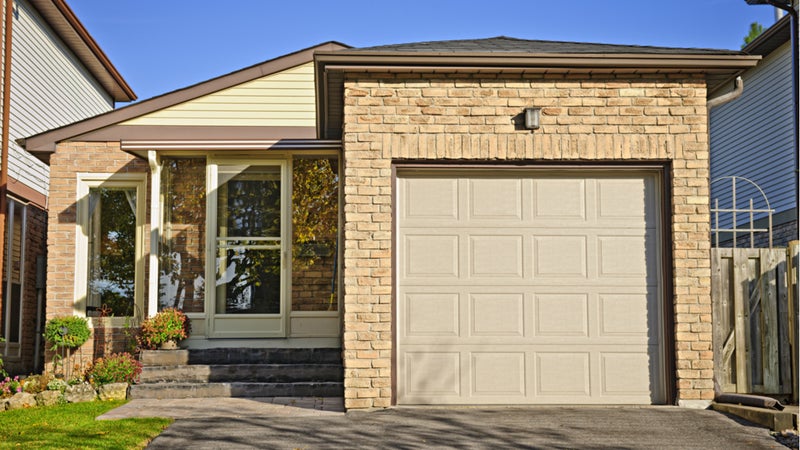
How We Make Money
The businesses whose offers you see on this website pay us. Unless our mortgage, home equity, and other home lending products are specifically prohibited by law, this compensation may have an impact on how and where products appear on this website, including, for example, the order in which they may appear within the listing categories. However, this payment has no bearing on the content we post or the user reviews you see here. We don’t include the range of businesses or loan options that you might have.

Our goal at Bankrate is to assist you in making more informed financial decisions. Although we follow stringent guidelines, this post might mention goods from our partners. Heres an explanation for . Bankrate logo.
Bankrate was established in 1976 and has a long history of assisting consumers in making wise financial decisions. We’ve upheld this reputation for more than 40 years by assisting people in making sense of the financial decision-making process and providing them with confidence regarding their next course of action.
You can rely on Bankrate to prioritize your interests because we adhere to a rigorous editorial policy. All of the content we publish is objective, accurate, and reliable because it is written by highly qualified professionals and edited by subject matter experts.
In order to give you peace of mind when making decisions as a buyer and homeowner, our mortgage reporters and editors concentrate on the topics that matter most to consumers: the newest rates, the greatest lenders, navigating the homebuying process, refinancing your mortgage, and more. Bankrate logo.
You can rely on Bankrate to prioritize your interests because we adhere to a rigorous editorial policy. Our team of distinguished editors and reporters produces truthful and precise content to assist you in making wise financial decisions.
We value your trust. Our goal is to give readers reliable, unbiased information, and we have established editorial standards to make sure that happens. Our reporters and editors carefully verify the accuracy of the editorial content they produce, making sure you’re reading true information. We keep our editorial staff and advertisers apart with a firewall. No direct payment from our advertisers is given to our editorial staff.
The editorial staff at Bankrate writes for YOU, the reader. Providing you with the best guidance possible to enable you to make wise personal finance decisions is our aim. We adhere to stringent policies to guarantee that advertisers have no influence over our editorial content. Advertisers don’t pay our editorial staff directly, and we carefully fact-check all of our content to guarantee accuracy. Thus, you can be sure that the information you’re reading, whether it’s an article or a review, is reliable and reputable. Bankrate logo.
How we make money
You have money questions. Bankrate has answers. For more than 40 years, our professionals have assisted you in managing your finances. We always work to give customers the professional guidance and resources they need to be successful on their financial journey.
Because Bankrate adheres to strict editorial standards, you can rely on our content to be truthful and accurate. Our team of distinguished editors and reporters produces truthful and precise content to assist you in making wise financial decisions. Our editorial team produces factual, unbiased content that is unaffected by our sponsors.
By outlining our revenue streams, we are open and honest about how we are able to provide you with high-quality material, affordable prices, and practical tools.
Bankrate. com is an independent, advertising-supported publisher and comparison service. We receive payment when you click on specific links that we post on our website or when sponsored goods and services are displayed on it. Therefore, this compensation may affect the placement, order, and style of products within listing categories, with the exception of our mortgage, home equity, and other home lending products, where legal prohibitions apply. The way and location of products on this website can also be affected by other variables, like our own unique website policies and whether or not they are available in your area or within your own credit score range. Although we make an effort to present a variety of offers, Bankrate does not contain details about all financial or credit products or services.
If you’ve never owned a home before or it’s been a long time since you did, you may be eligible for help or a first-time homebuyer loan. Generally speaking, first-time buyer loans have more accommodating requirements, like a lower down payment and credit score. Numerous offer grants and low-interest loans to assist buyers with closing costs and the down payment. This is our in-depth guide to first-time homebuyer programs and loans.
What is a first-time homebuyer program?
Programs for first-time homebuyers assist those who have never owned a home or haven’t owned one in a while in making homeownership more accessible. These programs are available in many forms, but typically offer a mortgage with a lower required down payment, a better interest rate, and additional benefits like help with closing costs and the down payment.
Types of first-time homebuyer programs
- Conventional loan programs with low down payments: Conventional loan programs with just a 3 percent down payment
- Programs for down payment assistance (DPA): Grants, loans, and matching funds to assist with your down payment
- Federal government-backed or provided loans and programs for first-time homebuyers
- State, nonprofit, and employer-sponsored initiatives: Local support for homebuying
In addition to these, first-time homebuyers who are employed in a particular field or who are students may also be eligible for a particular kind of loan. Below, we’ll break down what each of these programs entails:
Low-down payment conventional loans
The most common kind of mortgage, conventional loans only need a 3 percent down payment. Because of this, they are a desirable choice for first-time homebuyers who might not have a lot of savings. These low-down payment loans include the:
- Conventional 97 mortgage: With just a 3 percent down payment and a minimum credit score of 620, this conventional loan is supported by government-sponsored enterprises (GSEs) Fannie Mae and Freddie Mac. In addition, you must pay for private mortgage insurance (PMI), a kind of coverage that safeguards your mortgage lender in the event that you default on your loan. These premiums will be paid until the balance is reduced to 80% of the purchase price of your house.
- HomeReady mortgage: Fannie Mae’s HomeReady mortgage program, which is comparable to the Conventional 97 program, only requires a 3 percent down payment (with PMI, though it may be less expensive).
- Home Possible mortgage: The Home Possible mortgage program from Freddie Mac is the equivalent of the HomeReady mortgage, requiring a minimum down payment of three percent.
- HomeOne mortgage: Only first-time homebuyers are eligible for this Freddie Mac-backed mortgage, which likewise only requires a 3% down payment with PMI.
Fannie Mae or Freddie Mac won’t provide you with a low-down payment conventional loan directly. Rather, you will deal with a mortgage lender of your choosing, such as a credit union, bank, or online lender.
Fannie and Freddie also support a second set of 3 percent down payment programs through state housing finance agencies (HFAs), known as HFA Preferred and HFA Advantage, respectively. Learn more:
Down payment assistance (DPA) options
A cheaper first mortgage is provided by many first-time homebuyer programs to assist with the purchase of the property, and a second mortgage is available to help with the down payment and closing costs. These second mortgages are commonly structured as either:
- Low-interest loans: You can pay back a low-interest second mortgage over a few years.
- Loans with deferred payments: A second mortgage with no interest that you repay when you sell your house, refinance, or pay off your first mortgage.
- Forgivable loans: A second mortgage that you are not required to repay as long as you maintain your current mortgage payments and occupy the property for a predetermined period of time (the precise duration varies depending on the program).
Down payment savings match
Programs that match down payment savings up to a predetermined amount offer matched funds. The funds are exclusively intended for your down payment and closing expenses.
An Individual Development Account is one kind of matched savings program (IDA) If you’re eligible, you’ll work with a counselor to deposit money into an IDA over a predetermined amount of time. When you close on the house and stick to the savings plan, you’ll get the match.
In essence, a down payment or first-time homebuyer grant is free money to assist you with closing costs and your down payment. Typically, low- and moderate-income borrowers—those making no more than 80% of the area median income—are the ones who receive the grants. Additional requirements, such as a minimum credit score and a maximum home purchase price, may also apply.
Federal first-time homebuyer programs
First-time homebuyers frequently have the option of using the back mortgage programs offered by the Federal Housing Administration (FHA), Department of Veterans Affairs (VA), and Department of Agriculture (USDA). These agencies did not create or fund these loans; instead, authorized mortgage lenders across the United S. Some lenders even specialize in certain types. Here’s an overview:
- FHA loan: Backed by the Federal Housing Administration’s insurance, FHA loans enable you to purchase a house for as little as $3 and with a minimum credit score of 580. 5% down payment or a credit score as low as 500 plus at least 10% down payment You’ll pay FHA mortgage insurance premiums (MIP) if your down payment is less than 20%. These insurance costs are comparable to what you would pay for a conventional loan with a low down payment. The distinction is that unless you completely refinance out of an FHA loan, you are unable to cease paying FHA MIP.
- VA loan: The VA guarantees home loans for eligible U. S. military members (active duty, veterans and surviving spouses). There is a funding fee associated with these, but no down payment is necessary.
- USDA loan: To be eligible for a USDA loan, you must meet certain income requirements and make the purchase in a designated rural area. However, there is no down payment required.
Good Neighbor Next Door
The Good Neighbor Next Door program, overseen by the U. S. The Department of Housing and Urban Development (HUD) caters to teachers of pre-kindergarten through 12th grade, law enforcement personnel, firefighters, and emergency medical technicians. If you are employed in one of these fields, you are eligible to receive 50% off the purchase price of a house in a “revitalization area” as long as you stay there for three years or longer. On the website of the program, you can look up properties that are available in your state.
HomePath Ready Buyer Program
Fannie Mae’s HomePath ReadyBuyer program is geared toward first-time buyers interested in a foreclosed home. After taking a required online homebuyer education course, you can receive up to 3 percent in closing cost assistance toward the purchase of a property that’s been foreclosed and is now owned by Fannie Mae.This program isn’t for everyone, however: Not only are you limited in your choice of properties, but the options (like many foreclosed homes) might need lots of repairs.
Although making green improvements can be expensive, you can finance them with an energy-efficient mortgage (EEM), which can be financed through a conventional loan or one that is guaranteed by the VA or FHA. With this kind of mortgage, you can add the cost of energy-efficient improvements to your primary loan—such as double-pane windows, new insulation, or an upgraded HVAC system—without having to make a larger down payment.
But because you’re borrowing more, EEMs come with higher mortgage payments and requirements, like an energy assessment. However, those higher payments might be justified in the long run if you end up saving money on your utility bills.
Native American Direct Loan (NADL) and Section 184 program
The Native American Direct Loan (NADL), guaranteed by the VA, and Section 184 loan, guaranteed by HUD, provide financing to eligible Native American homebuyers. A Section 184 loan requires just 2.25 percent down. The NADL program has no down payment requirement, but is only for Native American veterans and their spouses.
First-time homebuyer programs by state
Each U. S. among its many duties, the state runs the Housing Finance Authority (HFA), which promotes homeownership. By area, the following HFAs and other resources are provided for first-time buyers:
When looking for an affordable mortgage, first-time homebuyers can find exceptional value in nonprofit programs. These choices are typically limited to buyers who meet specific demographic or other requirements, or who have paychecks that are noticeably lower than the local median income and identify them as low- or moderate-income buyers.
Neighborhood Assistance Corporation of America
The Neighborhood Assistance Corporation of America (NACA) is a nonprofit that provides low-rate mortgages to low- and moderate-income borrowers without requiring a down payment or closing costs or any mortgage insurance. The nonprofit doesn’t use credit scores to qualify you, either: Instead, it looks at other factors such as rent payment history.
If your yearly income is 60% or less of the local median income, you may be eligible for the homeownership program offered by Habitat for Humanity. To be eligible, you must not only meet the income requirements but also provide sweat equity, or assist in building the home or a home for another applicant.
Employees with housing needs are assisted by employer-assisted housing (EAH) programs, which are typically located in areas close to the workplace. This help can take many different forms, like a loan that can be repaid with time and required homeownership education.
EAH programs frequently have job restrictions, and there may be additional limitations like income caps or first-time homebuyer or tenure requirements.
First-time homebuyer programs for students
You may qualify for assistance in purchasing your first home if you recently received your college degree. For instance, the state of Ohio provides up to 5% down payment assistance through its Grants for Grads program to individuals who have completed an academic program within the last 48 months. These programs usually have a residency requirement, which is five years in Ohio, after which you have to repay the funds.
Next steps: How to apply for a first-time homebuyer program
If you think you might be eligible for a first-time homebuyer program, your mortgage lender can assist you in finding out and applying for one. You can also learn the eligibility requirements and proceed with the application process by visiting the website of your state’s Housing Finance Agency (HFA).
- A person who has never owned a home before is referred to as a first-time homebuyer. However, it’s frequently not necessary to be your first purchase in order to be eligible for a first-time buyer program. According to many programs, a buyer who hasn’t owned a home in the previous three years qualifies as a “first-time homebuyer.”
- Programs for first-time homebuyers are designed for those who have never owned a property. For some programs, this refers to individuals who haven’t had a house in the previous three years. The requirements may also include, depending on the program, not exceeding a particular income threshold or purchasing a home above a particular price range.
- For any borrower, but especially for first-time homebuyers, an affordable mortgage is ideal. This could entail finding a loan with a cheaper interest rate, requiring less down payment, having little to no mortgage insurance, and finding other ways to save money. Nevertheless, because the monthly payments are smaller and more predictable, a 30-year fixed-rate mortgage is favored by many first-time homebuyers. Two popular 30-year fixed-rate choices: conventional loans and FHA loans.
- Programs for first-time homebuyers that educate you on the many facets of home ownership are intended to assist you. You must enroll in a course in order to be eligible for many first-time buyer loan programs. You may be able to fulfill this requirement if you’re getting a conventional loan by enrolling in the Fannie Mae HomeView online course. Check with your loan officer to learn your options.



FAQ
What’s the best loan for first-time home buyers?
|
|
Minimum Down Payment
|
Minimum Credit Score
|
|
FHA Loan
|
3.5%
|
580
|
|
Conventional 97
|
3%
|
620
|
|
HomeReady/Home Possible
|
3%
|
620
|
|
USDA Loan
|
0%
|
640
|
What credit score do you need to buy a house for the first-time?
While credit score requirements differ from lender to lender, is there a minimum credit score required for first-time homebuyers? However, to be approved for the majority of conventional mortgages, a buyer’s credit score must be at least 620. It is unlikely that you will be approved for a traditional loan if your score is lower than this benchmark.
What type of mortgage is best for first-time buyers?
FHA Mortgage The Federal Housing Administration insures low-down payment mortgages (FHA) For first-time buyers who are not qualified for other low- or no-down payment options, they are a catch-all program.
Does Oregon have a first-time home buyer program?
Additionally, Oregon offers programs to assist first-time homebuyers in saving money, such as matching savings contributions or tax-advantaged savings accounts. Statewide programs include: OHCS Bond Residential Loan Program. OHCS Down Payment Assistance.
Read More :
https://www.rocketmortgage.com/learn/first-time-home-buyer
https://www.bankrate.com/mortgages/first-time-homebuyer-loans-and-programs/
